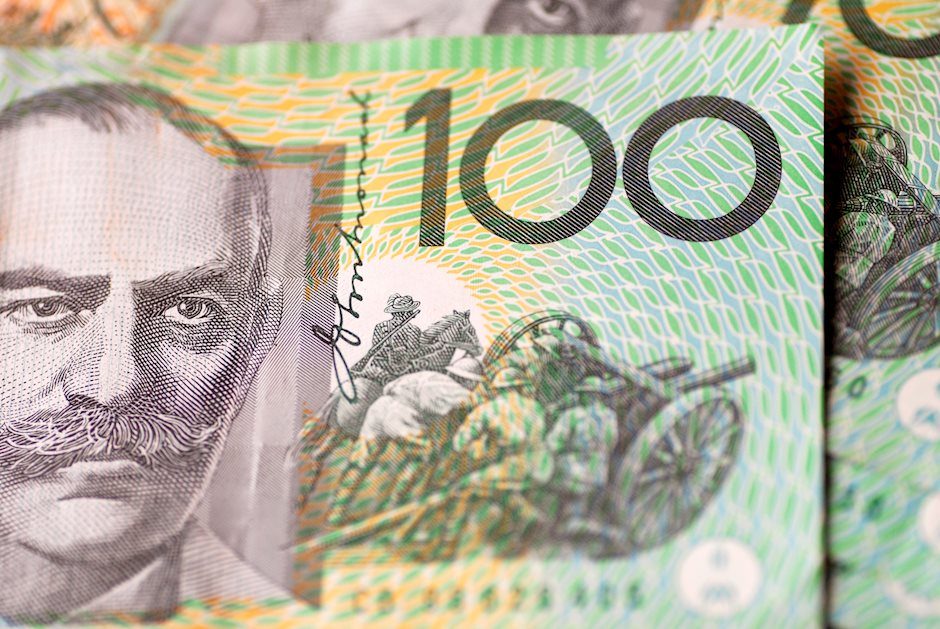AUD/USD posts fresh three-week high at 0.6640 ahead of US inflation
- AUD/USD refreshes a three-week high at 0.6640 with US Inflation and Aussie Employment in focus.
- Traders remain split over the size of the Fed interest-rate reduction in September.
- The RBA is expected to keep its OCR steady at 4.35% by the year-end.

The AUD/USD pair hovers near a fresh three-week high at 0.6640 in Wednesday’s European session. The Aussie asset clings to gains as the US Dollar (USD) dips ahead of the United States (US) Consumer Price Index (CPI) data for July, which will be released at 12:30 GMT.
Investors will keenly focus on the US inflation data as it will influence market speculation for the size of interest-rate cuts by the Federal Reserve (Fed) in the September meeting. The CME FedWatch tool shows that traders price in a 54.5% chance for a 50 basis point (bp) rate reduction in September.
The US CPI report is expected to show that monthly headline and core inflation rose by 0.2%. Annual headline and core CPI are estimated to have decelerated by one-tenth to 2.9% and 3.2%, respectively.
Meanwhile, the market sentiment remains steady ahead of the US inflation data release. S&P 500 futures have posted nominal gains in European trading hours. The US Dollar Index (DXY), which tracks the Greenback’s value against six major currencies, slides further below 102.50. 10-year US Treasury yields slump to near 3.84%.
The Australian Dollar (AUD) remains on sidelines as investors await the Aussie Employment data for July, which will be published on Thursday. Economists expect that labor demand remain slowed in July as fresh payrolls are seen at 26.5K payrolls, lower than June’s reading of 50.2K. The Unemployment Rate is seen steady at 4.1%.
The labor market data will influence expectations for the Reserve Bank of Australia’s (RBA) interest rate path. Currently, the RBA is expected to leave its Official Cash Rate (OCR) unchanged at 4.35% for the entire year.
Australian Dollar FAQs
One of the most significant factors for the Australian Dollar (AUD) is the level of interest rates set by the Reserve Bank of Australia (RBA). Because Australia is a resource-rich country another key driver is the price of its biggest export, Iron Ore. The health of the Chinese economy, its largest trading partner, is a factor, as well as inflation in Australia, its growth rate and Trade Balance. Market sentiment – whether investors are taking on more risky assets (risk-on) or seeking safe-havens (risk-off) – is also a factor, with risk-on positive for AUD.
The Reserve Bank of Australia (RBA) influences the Australian Dollar (AUD) by setting the level of interest rates that Australian banks can lend to each other. This influences the level of interest rates in the economy as a whole. The main goal of the RBA is to maintain a stable inflation rate of 2-3% by adjusting interest rates up or down. Relatively high interest rates compared to other major central banks support the AUD, and the opposite for relatively low. The RBA can also use quantitative easing and tightening to influence credit conditions, with the former AUD-negative and the latter AUD-positive.
China is Australia’s largest trading partner so the health of the Chinese economy is a major influence on the value of the Australian Dollar (AUD). When the Chinese economy is doing well it purchases more raw materials, goods and services from Australia, lifting demand for the AUD, and pushing up its value. The opposite is the case when the Chinese economy is not growing as fast as expected. Positive or negative surprises in Chinese growth data, therefore, often have a direct impact on the Australian Dollar and its pairs.
Iron Ore is Australia’s largest export, accounting for $118 billion a year according to data from 2021, with China as its primary destination. The price of Iron Ore, therefore, can be a driver of the Australian Dollar. Generally, if the price of Iron Ore rises, AUD also goes up, as aggregate demand for the currency increases. The opposite is the case if the price of Iron Ore falls. Higher Iron Ore prices also tend to result in a greater likelihood of a positive Trade Balance for Australia, which is also positive of the AUD.
The Trade Balance, which is the difference between what a country earns from its exports versus what it pays for its imports, is another factor that can influence the value of the Australian Dollar. If Australia produces highly sought after exports, then its currency will gain in value purely from the surplus demand created from foreign buyers seeking to purchase its exports versus what it spends to purchase imports. Therefore, a positive net Trade Balance strengthens the AUD, with the opposite effect if the Trade Balance is negative.
Author

Sagar Dua
FXStreet
Sagar Dua is associated with the financial markets from his college days. Along with pursuing post-graduation in Commerce in 2014, he started his markets training with chart analysis.

















